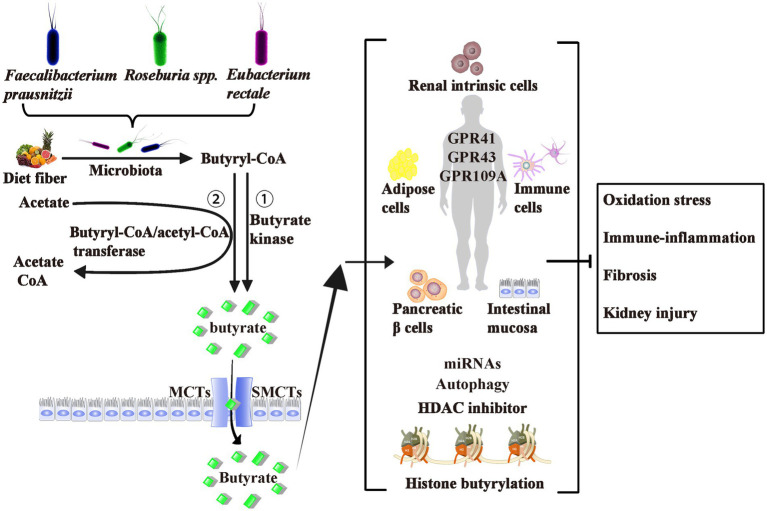Figure 1.
Origin, Production, Transport, Effects, and Mechanism of Butyrate. Butyrate is produced from dietary fiber by bacterial fermentation through two metabolic pathways: (1) butyryl-CoA is transformed to butyrate via butyrate kinase and (2) the CoA moiety of butyryl-CoA is transferred to butyrate and acetyl-CoA via butyryl-CoA: acetate CoA-transferase. The two most important butyrate-producing bacteria are Faecalibacterium prausnitzii and Eubacterium rectale/Roseburia spp. Butyrate is absorbed by colonic epithelial cells as energy sources mainly through MCTs and SMCTs. About three of the de-orphanized GPCRs (GPR41, GPR43, and GPR109A) have been identified as butyrate receptors in the human intestinal mucosa, renal intrinsic cells, immune cells, pancreatic β cells, and adipose tissues. Butyrate act as epigenetic regulators by the inhibition of HDAC, the upregulation of miRNAs, or induction of the histone butyrylation and autophagy. Although controversial, most studies believe that exogenous or endogenous butyrate improves inhibits oxidative stress, and ameliorates diabetic inflammation. GPCRs, G-protein coupled receptors; MCTs, monocarboxylate transporters; SMCTs, sodium-coupled monocarboxylate transporters; CoA, coenzyme A; HDAC, histone deacetylase; miRNAs, microRNAs.

